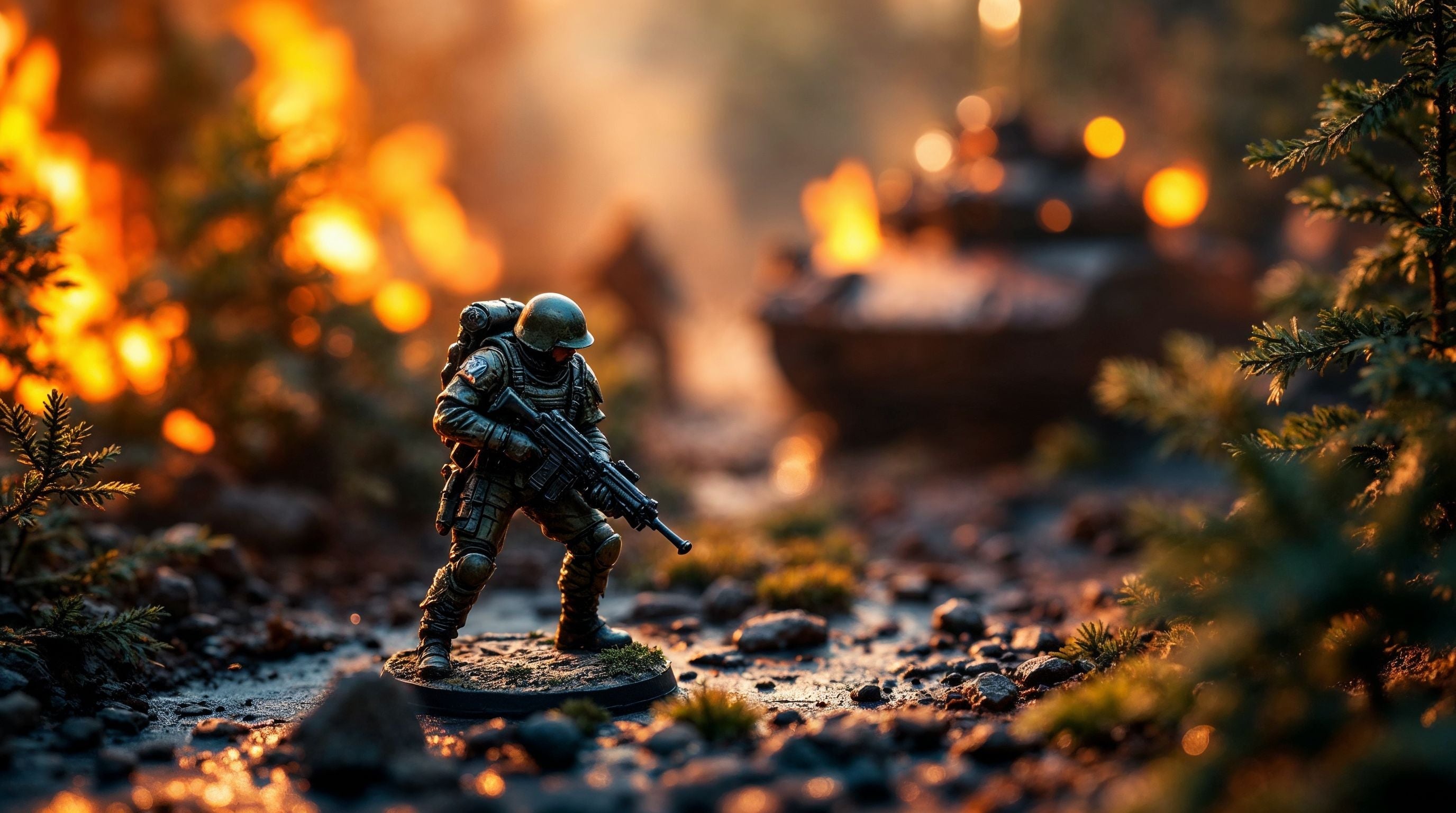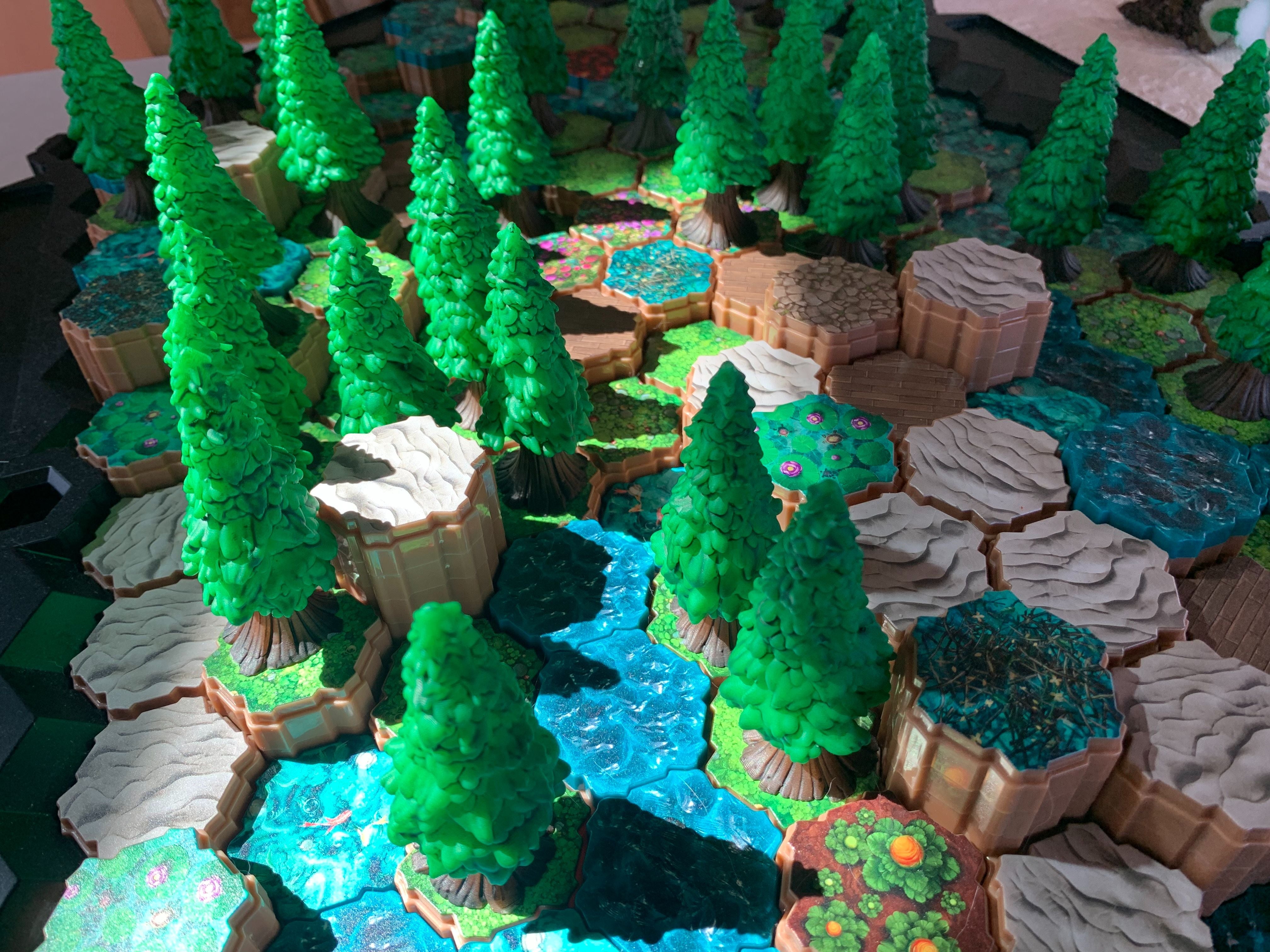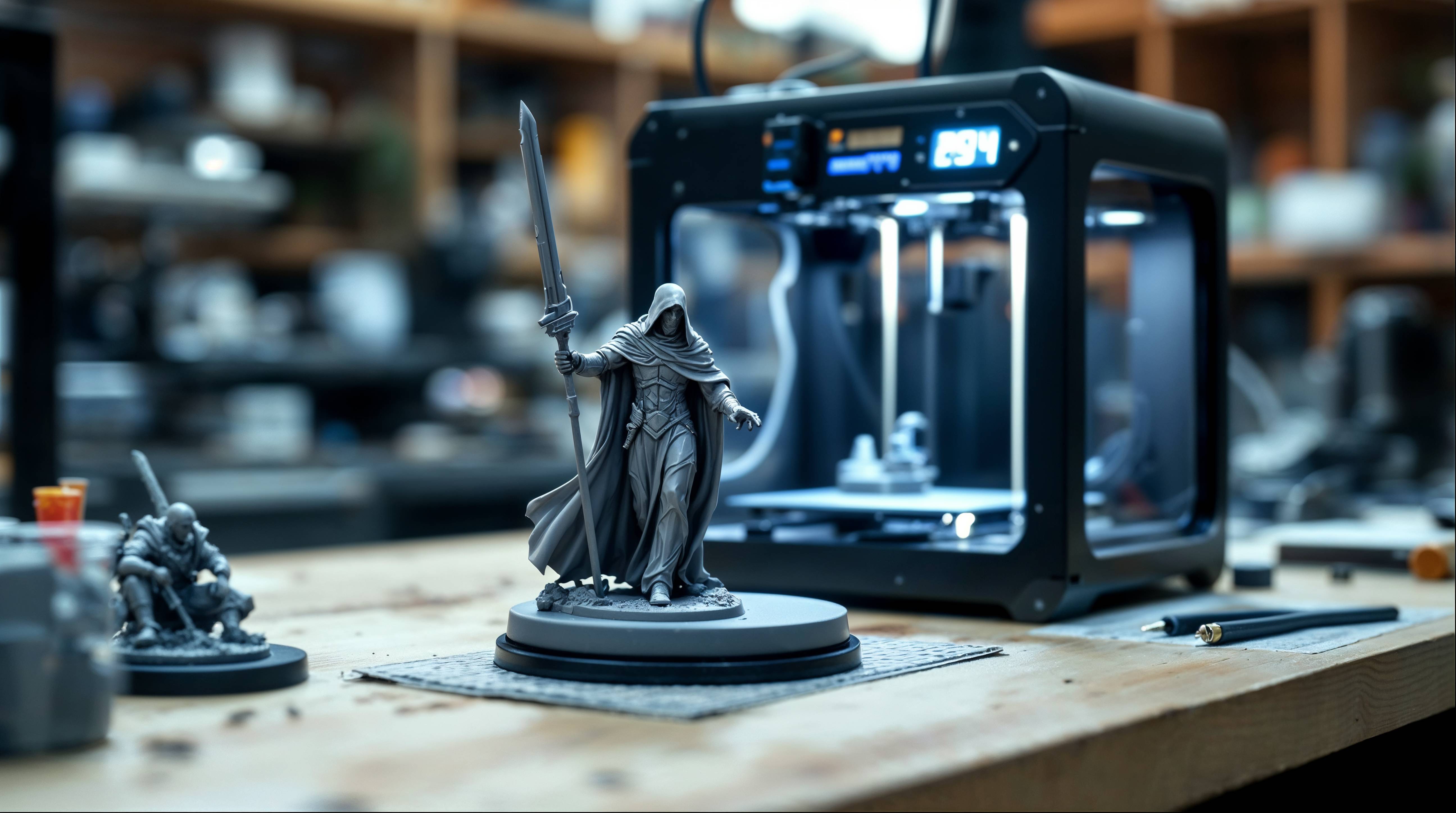The Fascinating World of Wargaming and Miniatures
Wargaming and miniatures represent a vibrant corner of the tabletop gaming universe that combines strategic thinking, artistic expression, and historical appreciation. Unlike traditional board games with fixed components, wargaming offers players the opportunity to command armies, recreate historical battles, or forge new narratives in fantastical worlds. The hobby encompasses everything from meticulously painting miniature figures to planning tactical maneuvers across carefully designed terrain. Whether you're a history buff, an art enthusiast, or simply someone who enjoys deep strategic challenges, the world of wargaming and miniatures provides a multifaceted experience that rewards both creativity and analytical thinking.
- Conquer and Craft: A Dive into the World of Wargaming and Miniatures
- The Fascinating World of Wargaming and Miniatures
- Historical Roots of Tabletop Warfare
- Types of Wargames: From Ancients to Sci-Fi
- Historical Wargames: Refighting the Past
- Fantasy and Science Fiction Wargames: Unbounded Imagination
- The Art of Miniature Painting and Modeling
- Techniques and Tools for Miniature Painting
- Terrain Creation and Diorama Building
- Strategic Thinking and Gameplay Mechanics
- Core Mechanics in Wargaming Systems
- Building Effective Armies and Force Composition
- The Wargaming Community and Culture
- Clubs, Tournaments, and Online Communities
- Getting Started in Wargaming and Miniatures
- Choosing Your First Wargame System
- Essential Supplies and Budget Considerations
- Frequently Asked Questions About Wargaming and Miniatures
- How long does it take to learn a typical wargame?
- How much time does painting miniatures require?
Historical Roots of Tabletop Warfare
The genealogy of modern wargaming traces back to Prussian military training exercises in the early 19th century. These "Kriegsspiel" sessions utilized maps and pieces representing military units to simulate battlefield conditions and train officers in tactical decision-making. These primordial wargames gradually evolved from purely military applications into recreational pursuits. By the mid-20th century, companies like Avalon Hill began producing commercial wargames focusing on historical conflicts, introducing concepts such as hexagonal movement grids and combat resolution tables that remain fundamental to many wargames today.
The 1970s witnessed a watershed moment with the release of Dungeons & Dragons, which, while not a wargame per se, emerged directly from wargaming traditions and popularized the use of miniature figures for tabletop gaming. This period also saw the emergence of Games Workshop and their influential Warhammer fantasy and Warhammer 40,000 science fiction universes, which helped transform miniature wargaming from a niche hobby into a global phenomenon with dedicated communities spanning continents.
Types of Wargames: From Ancients to Sci-Fi
The wargaming hobby encompasses an astonishing variety of games spanning virtually every era of human conflict and extending into purely fictional realms. This diversity ensures that enthusiasts can find games aligning perfectly with their particular interests, whether historical or fantastical.
Historical Wargames: Refighting the Past
Historical wargames attempt to recreate actual conflicts from throughout human history. These range from ancient battles with phalanxes and chariots to medieval conflicts featuring knights and longbowmen, from Renaissance pike-and-shot warfare to the global conflagrations of the World Wars. Games like "Bolt Action" focus on World War II skirmishes, while "Field of Glory" recreates ancient and medieval battles with remarkable attention to historical accuracy. The appeal of these games lies not only in their gameplay but in the educational dimension they provide, offering insights into the tactics, technologies, and challenges faced by commanders throughout history.
Many historical wargames strive for a high degree of verisimilitude, with rules accounting for period-specific factors like weather conditions, supply lines, and command structures. Players often research historical battles extensively before recreating them, sometimes discovering that making the same decisions as historical commanders leads to similar outcomes, while different approaches might yield alternative histories.
Fantasy and Science Fiction Wargames: Unbounded Imagination
While historical wargames operate within the constraints of actual events, fantasy and science fiction wargames throw open the doors to unlimited creative possibilities. Games like "Warhammer Fantasy Battles" and "Kings of War" transport players to worlds of elves, dwarves, and monstrous creatures, while science fiction offerings such as "Warhammer 40,000" and "Infinity" explore futuristic conflicts with advanced weaponry and alien technologies.
The liberation from historical accuracy allows these games to introduce innovative mechanics and spectacular abilities that would be impossible in reality-based simulations. A dragon might breathe fire across enemy lines, or a heavily armored space marine might teleport directly into enemy territory. These fantastical elements add dramatic flair to gameplay while still requiring thoughtful strategy and tactical acumen.
"Wargaming is the perfect blend of intellectual challenge and artistic expression. Where else can you simultaneously exercise your strategic mind, practice fine motor skills through painting, learn about history or science fiction lore, and socialize with like-minded enthusiasts? It's truly a renaissance hobby." - Mike McVey, renowned miniature sculptor and painter
The Art of Miniature Painting and Modeling
Miniature painting represents one of the most distinctive and rewarding aspects of the wargaming hobby. Beyond its obvious aesthetic value, the process of transforming unpainted "gray plastic" into vibrant, detailed miniatures offers a meditative creative outlet that complements the strategic aspects of gameplay.
Techniques and Tools for Miniature Painting
Miniature painting employs specialized techniques that allow artists to create astonishing detail on figures sometimes smaller than an inch tall. Base coating establishes foundational colors, while techniques like dry brushing highlight raised details by applying lighter shades with minimal paint on the brush. Washing involves applying thin, dark paint that settles into recesses, creating shadow and definition. More advanced techniques include layering (building up translucent layers of paint), glazing (applying translucent colors to blend or tint underlying areas), and edge highlighting (applying precise lines of lighter color along edges to create definition).
The miniature painter's arsenal typically includes fine-tipped brushes in various sizes, a wet palette to keep paint workable, a comfortable lamp with daylight-spectrum illumination, and magnification tools for working on minute details. Water-based acrylic paints dominate the hobby due to their versatility, quick drying time, and ease of cleanup. Many painters also employ airbrushes for smooth base coats and subtle gradient effects that would be challenging to achieve with traditional brushwork.
Terrain Creation and Diorama Building
Beyond individual miniatures, many wargamers craft elaborate terrain pieces and scenic bases that transform their battles into visually stunning panoramas. At Adventure Together, we use SOURCE. The modular, rapid setup, rapid tear down, and infinitely customizable benefits of the system make it easy to collaborate on a stunning environment and then get right into the game. You can pack it up just as easily when you're done, all without sacrificing the immersive, visual, and three dimensional quality many are looking for in the first place when making dioramas. It cuts the investment and time required to build epic battlefields down by orders of magnitude, so you can spend more time playing and less time preparing.
Building battlefield with SOURCE takes this artistic expression further, arranging miniatures and terrain to tell specific stories or capture dramatic moments. SOURCE's functional gaming terrain prioritizes playability and durability, without sacrificing narrative and visual impact, and because it's non-interlocking it allow for destruction and construction during gameplay - unlocking a world of interactive environmental mechanical potential. Many hobbyists find that creating these miniature worlds offers a creative satisfaction distinct from but complementary to the gameplay experience itself.
Strategic Thinking and Gameplay Mechanics
At their core, wargames are exercises in strategic and tactical decision-making. Unlike many board games that rely heavily on chance, wargames typically balance probability with player choice, rewarding careful planning and adaptation.
Core Mechanics in Wargaming Systems
Most wargames share certain fundamental mechanics, though their specific implementation varies widely between systems. Movement mechanics determine how units traverse the battlefield, often using measuring tools for precise distances rather than the grid-based movement common in traditional board games. SOURCE uses hexes, which can roughly translate to 1 inch of movement when calculating range, movement, and area of effect. I've always preferred this method of play to measuring, which tends to lead to a far more disputing of mm differences than I care for. Combat resolution typically involves dice rolls modified by various factors like unit type, terrain, and special abilities. Command and control mechanics simulate the challenges of battlefield communication, sometimes limiting a player's ability to activate all their units optimally in a given turn.
Many contemporary wargames employ an alternating activation system where players take turns moving individual units or small groups rather than moving their entire army at once. This approach creates a more dynamic and interactive experience compared to the traditional "I go, you go" turn structure. Resource management also features prominently, whether tracking ammunition, magic points, or command tokens that represent a commander's finite attention and influence.
| Wargame Type | Typical Scale | Key Features | Popular Examples |
|---|---|---|---|
| Skirmish Games | 5-30 miniatures per player | Individual character development, detailed actions | Mordheim, Frostgrave, Kill Team, (TimeStrike) |
| Battalion-level Games | 30-100 miniatures per player | Combined arms tactics, formation importance | Warhammer 40K, Age of Sigmar, Bolt Action |
| Mass Battle Games | 100+ miniatures per player | Grand strategy, army-level maneuvers | Warhammer Fantasy Battles, Kings of War, Field of Glory |
Building Effective Armies and Force Composition
Army building constitutes a meta-game activity that many players find as engaging as the battles themselves. This process involves selecting units that work synergistically while addressing the strategic problems posed by opponents' forces. Effective army composition requires balancing offensive capabilities with defensive resilience, mobility with firepower, and specialized units with general-purpose troops.
Points-based systems allow players to construct roughly equivalent forces within agreed-upon limitations, though experienced players recognize that the effectiveness of points allocation varies significantly based on strategic context and player skill. The tension between creating a thematically coherent force that reflects a player's aesthetic preferences and constructing a competitively optimized army represents one of the hobby's most interesting challenges, with different gaming groups emphasizing different aspects of this spectrum.
The Wargaming Community and Culture
Wargaming thrives as much through its vibrant community as through the games themselves. The social dimension of the hobby creates networks of enthusiasts who share techniques, organize events, and develop the communal knowledge that sustains wargaming traditions.
Clubs, Tournaments, and Online Communities
Local gaming clubs provide the bedrock of the wargaming community, offering regular opportunities for play and friendship. These clubs often maintain collections of terrain and sometimes communal armies, reducing the initial investment required from newcomers. Many clubs organize escalation leagues where players gradually increase their forces through a series of linked games, allowing organic growth in both collection size and playing experience.
Tournaments represent the competitive pinnacle of the hobby, ranging from friendly local events to massive international championships with hundreds of participants. These events often feature spectacular display armies and elaborate gaming tables that showcase the artistic heights of the hobby. Beyond pure competition, tournaments function as social gatherings where the broader community celebrates shared passion.
Digital platforms have transformed how wargamers connect, with forums, social media groups, and dedicated websites facilitating knowledge sharing across geographical boundaries. YouTube channels and Twitch streams dedicated to wargaming tactics, painting tutorials, and battle reports have democratized expertise, allowing newcomers to learn from experienced hobbyists regardless of their physical location.
Getting Started in Wargaming and Miniatures
The multifaceted nature of wargaming can make entry seem daunting, but breaking down the process into manageable steps helps newcomers navigate their entry into the hobby effectively.
Choosing Your First Wargame System
Selecting an initial wargame system represents perhaps the most consequential decision for newcomers. Important considerations include the setting (historical or fictional), complexity level, community size, and ongoing support from publishers. Many veterans recommend beginning with skirmish games requiring fewer miniatures before graduating to larger-scale systems. Games with starter sets containing all necessary components (simple rules, dice, and a basic force for each player) offer particularly accessible entry points.
Local gaming stores can provide invaluable guidance, often hosting demonstration games that allow curious newcomers to experience different systems before committing. Many stores maintain community bulletin boards connecting new players with established groups willing to provide introductory games. Online research through forums and video reviews also helps prospective wargamers identify systems aligning with their interests and aesthetic preferences.
- Start small with a skirmish game requiring fewer miniatures
- Visit local gaming stores for demonstrations and community connections
- Research online to find games matching your interests and aesthetic preferences
- Consider the active player community in your local area
- Look for games with comprehensive starter sets containing everything needed to begin playing
Essential Supplies and Budget Considerations
Wargaming necessitates an initial investment in materials beyond the miniatures themselves. Essential supplies include hobby knives and clippers for removing miniatures from sprues, brushes in various sizes, a basic paint selection, primer, and varnish for protecting completed paintwork. Measuring tools specific to your chosen game system, appropriate dice, and a copy of the rules complete the fundamental toolkit.
While wargaming can become an expensive pursuit for enthusiasts with disposable income, budget-conscious beginners can adopt several strategies to minimize costs. Focusing on smaller-scale games, purchasing second-hand miniatures, and prioritizing fundamental skills over specialized equipment all help manage initial expenses. Many experienced hobbyists recommend investing in quality brushes and reliable paints from the outset, as these directly impact results and satisfaction, while economizing on less critical elements like carrying cases or premium terrain.
Frequently Asked Questions About Wargaming and Miniatures
Newcomers to wargaming often share common questions about getting started and progressing in the hobby. Addressing these queries helps demystify the experience and smooths the path to participation.
How long does it take to learn a typical wargame?
Learning curves vary significantly between game systems, but most wargames require 2-3 play sessions to grasp basic mechanics and several months of regular play to develop strategic proficiency. Modern games often employ layered learning approaches, with core rules covering essential concepts and advanced rules adding complexity as players gain comfort. Many games also offer quick-start versions specifically designed for introductory play. Patient teachers and a willingness to make mistakes both contribute significantly to learning efficiency.
How much time does painting miniatures require?
Painting time depends enormously on desired quality and individual technique. Basic tabletop-quality paint jobs might require 1-2 hours per infantry figure, while competition-level painting can demand 20+ hours for a single character model. Batch painting—preparing several similar miniatures simultaneously through each painting stage—significantly increases efficiency for army production. Many painters find that their speed improves dramatically with practice as techniques become intuitive rather than requiring conscious attention.
The beauty of miniature painting lies in its scalability: beginners can achieve satisfying results with simple techniques, while the ceiling for mastery remains virtually limitless as painters develop their skills and artistic vision.
Wargaming and miniatures offer a unique intersection of artistic expression, strategic thinking, and social interaction that few other hobbies can match. Whether you're drawn to the historical authenticity of recreating ancient battles, the unbounded creativity of fantasy worlds, or simply the meditative practice of painting detailed miniatures, this multifaceted hobby rewards investment with rich experiences and lasting friendships. The journey from assembling your first models to commanding expertly painted armies across lovingly crafted battlefields represents not just a progression in skill but an evolution in how you engage with games, history, and art.




View Comments
Beyond The Table: No Instructions For Fun
Unlock Hours of Fun with These Must-Try Popular Board Games
Thanks, John! Glad you enjoyed it :)
My favorite aspect is the: “unique intersection of artistic expression, strategic thinking and social interaction” ~CT, in other words- ALL OF THE ABOVE. Thank you Chris, this is an excellent article. I thoroughly enjoyed it. BRAVO.
What is your favorite aspect of tabletop wargaming? Let me know in the comments.